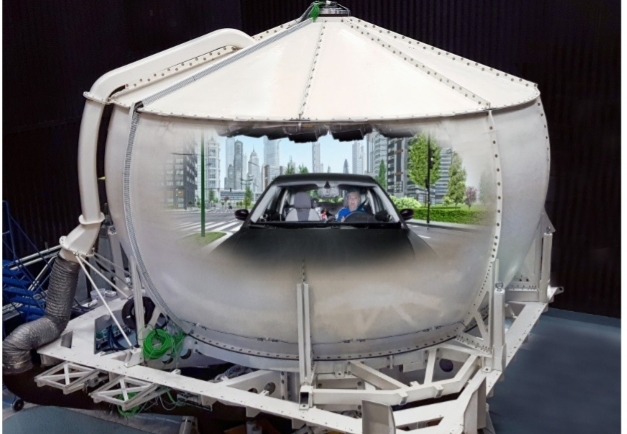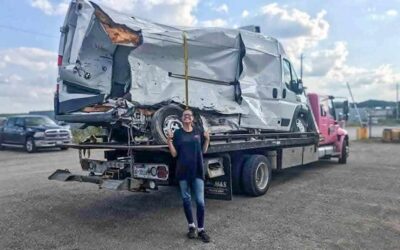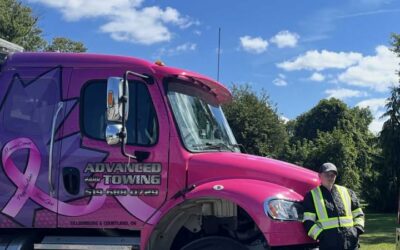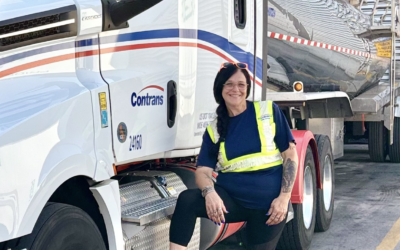The top rehabilitation research centre in the world is located in Canada at the Toronto Rehabilitation Institute (TRI), a member of the University Health Network (UHN). In this blog we will share how TRI develops ways to reduce accidents and injuries, to rehabilitate people after an injury or illness, and to help people continue to live independently in their own homes as they grow older. Every day we face challenges that may result in accidents and injury. One of our main labs (Challenging Environment Assessment Lab, or CEAL for short) features four unique simulators that can create realistic challenges to our safety but without actually hurting anyone. One of these simulators includes a real car that can be driven through a rain storm against glaring headlights. A second one allows a pedestrian to walk through the streets of Toronto encountering traffic and other pedestrians. A third one simulates Winter with real ice, snow and cold winds and the fourth simulator enables researchers to study the safety of building codes to prevent falls. These simulators can be lifted with a crane onto different bases including a powerful hydraulic system that can fly them around the room to mimic aggressive driving or to cause a sudden unexpected movement that makes someone reach for a handrail to prevent a fall. By creating real-life conditions in controlled settings, our researchers are able to gather data to help them develop and test new products and also provide the evidence needed to change policies and/or codes and standards.

Above: DriverLab is seen on the hydraulic motion base in CEAL. The bridge (on the right) provides access to the lab and is retracted out of the way during testing. DriverLab Motor vehicle accidents claim the lives of 1.24 million people world-wide each year and are the number one cause of accidental death in Canada. Older adults are over-represented in these statistics, and yet most want to continue to drive to maintain their independence. About one quarter of Canada’s driving population will be over 65 years of age by 2024. TRI has built the most advanced driving simulator in Canada. DriverLab includes a fully-equipped car surrounded by a virtual reality environment on top of a moveable base. It contains a full-sized passenger vehicle mounted on a turntable within a 360 degree field of view projected environment. Different driving scenarios can be created in this chamber during which we measure the driver’s performance. Our one-of-a-kind features include a rain simulator that produces real rain droplets on the windshield and a robot glare simulator that realistically recreates the glare of 2 oncoming headlights at night. Our studies also aim to better understand impairment resulting from cannabis and opioid medication, help with the design of self-driving vehicles, and the effects of distraction and drowsiness on driving.

Above: Cut-away view of DriverLab on the motion base.

Above: Interior of DriverLab showing the overhead cameras which project various streetscapes.
StreeLab Hearing loss is the third most common chronic health condition in older adults. Individuals with age-related hearing loss commonly complain of mobility problems and are at 3X greater risk of falling compared to normal-hearing adults. In StreetLab, we are able to study participants as they safely navigate through simulated, 3D Toronto streetscapes. This allows scientists a new way to test mobility devices, hearing aids, and other technologies to help people live safely and independently. Participants can walk or ride a wheelchair through this virtual environment on a treadmill-like belt. Unlike a regular lab, StreetLab allows participants to experience realistic situations while allowing scientists to manipulate certain aspects of the environment. For instance, traffic signals, ‘intelligent’ vehicles, and streams of virtual pedestrians can be adjusted to interact with the research participant.

Above: Exterior view of StreetLab in the pallet hall where non-motion studies can be performed.

Above: Interior view of StreetLab showing streetscape through which the participant is walking. The cameras mounted above project the streetscape to provide an immersive experience. A safety harness is used but not seen above.
WinterLab Injuries from slip and fall accidents on ice and snow bring serious challenges to individuals and the healthcare system. Canada and other winter-experiencing countries see an increase in these injuries during the winter–over 21,000 Ontarians visit an emergency room because of slips and falls on ice each winter. Using proper footwear during winter plays a key role in reducing the number of slips and falls. In WinterLab, we can create winter-like conditions with subzero temperatures, ice, snow and wind. We have developed a cutting-edge solution for testing winter boots for slip resistance. Our Maximum Achievable Angle (MAA) method is the only one of its kind in the world. We ask participants to walk back and forth on a floor covered entirely with ice while we gradually tip the simulator. The maximum angle that the participants can walk on without slipping wearing a particular shoe is used to assess the shoe’s slip resistance. We have tested over 260 different types of footwear, including 254 casual and safety work footwear, as well as 7 spiked footwear/overshoes. Overall, only 29% of the footwear we’ve tested meet the minimum slip resistance standards set out by our MAA test. Our results are published on a regularly updated website, which is helping Canadians make more informed decisions about the safety of the winter footwear they purchase; visit www.ratemytreads.com. In a small study of community healthcare workers, those who wore footwear that passed our minimum standard had four times 4 fewer falls; we predicted that this will save that company around $1 million annually in lost time injuries if it purchased this recommended footwear for their employees.

Above: WinterLab is raised incrementally to rate footwear slip resistance.

Above: WinterLab is used to measure performance of mobility scooters on slopes with snow and icy surfaces.
StairLab Falls on stairs are a leading cause of injury and hospitalization, especially in older adults. It is estimated 3,800 people in Ontario are hospitalized each year as a result of a stair fall. In StairLab we can measure the movement and body mechanics of walking up and down stairs. By shaking the stairs while participants walk up and down we can study the effects of varying step depth, height, and the edge features, or handrail size, shape, and height on stair falls. Our studies have resulted in changes to the Building Code of Canada for residential stairs. It is estimated these Building Code changes will prevent 33,000 injuries and save 39 Canadian lives within the first five years of being implemented.

Above left and right: Step and handrail features are changed to measure fall risk while going up and down stairs in StairLab.
About us Research at TRI involves 45 researchers, 104 support staff, and 102 students. We have 14 simulators and specialized labs to study, for example, falls, sleep, swallowing, care at home or in a hospital, balance therapies, personalized rehabilitation, recovery from spinal cord injury, and more.
To learn more about TRI and our research, or to book a tour of our research facilities, visit https://www.kite-uhn.com
For questions about the research team, contact us at truckingstudy@uhn.ca
Stay tuned – in our next blog we’ll talk about our research and developments on sleep apnea – it’s not just about feeling tired!





0 Comments